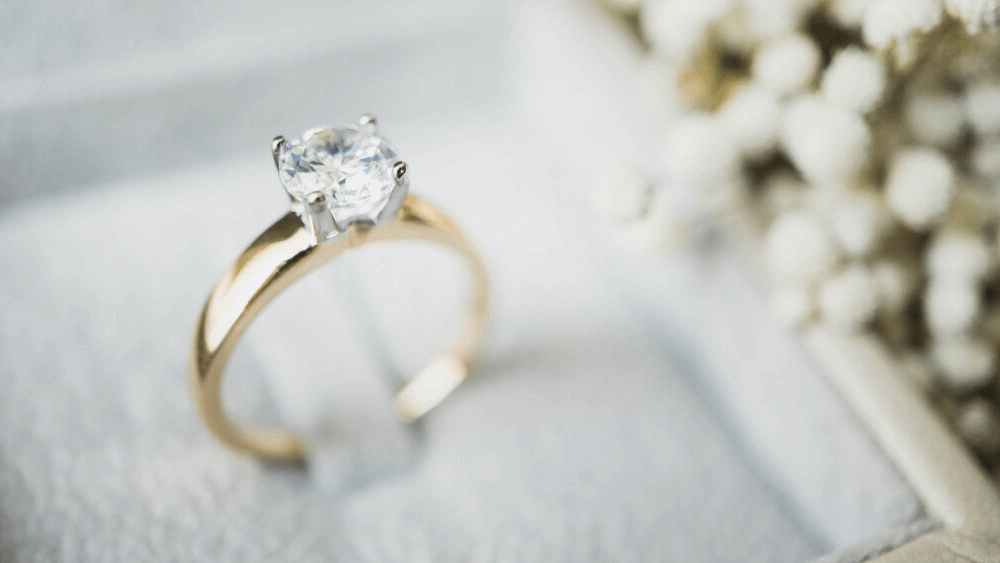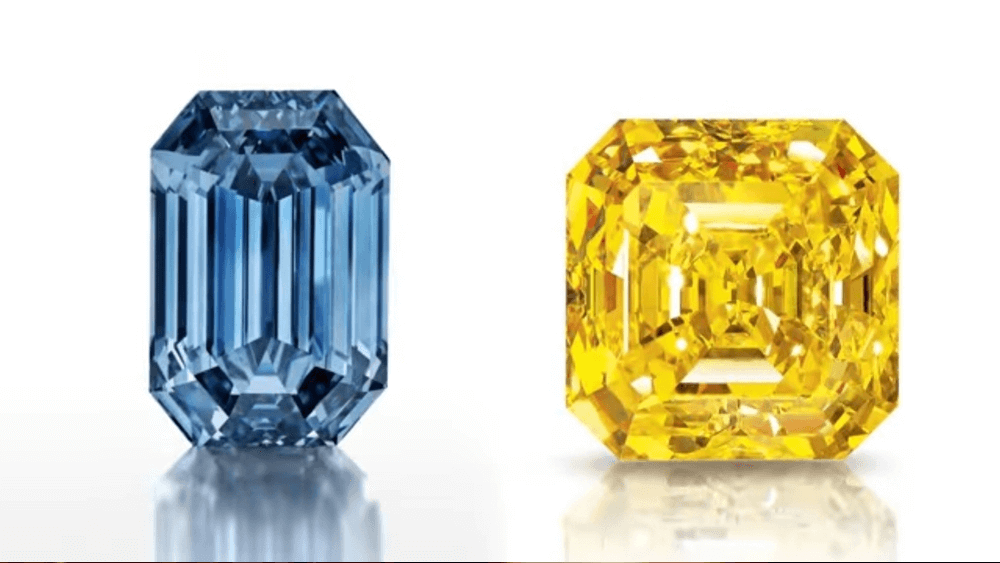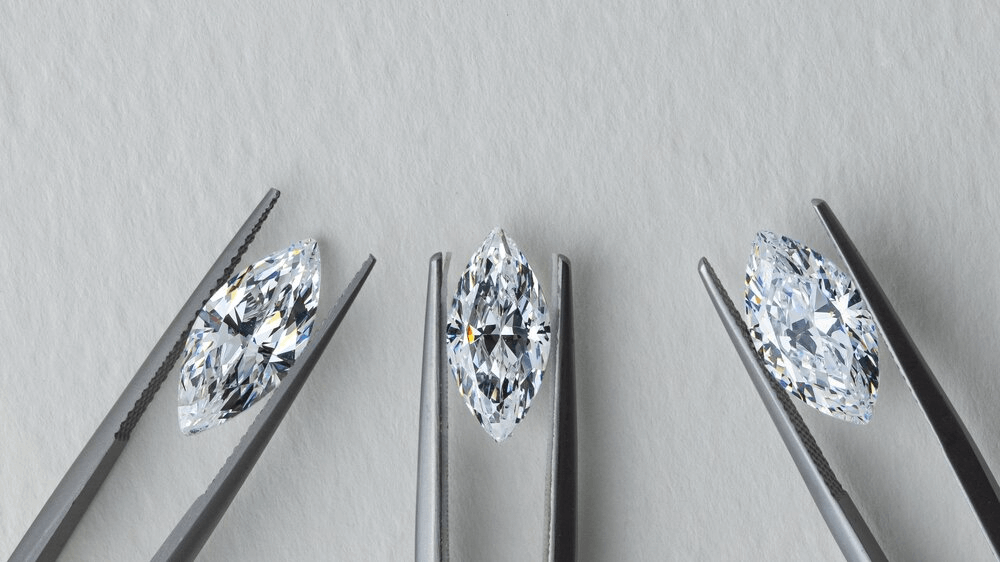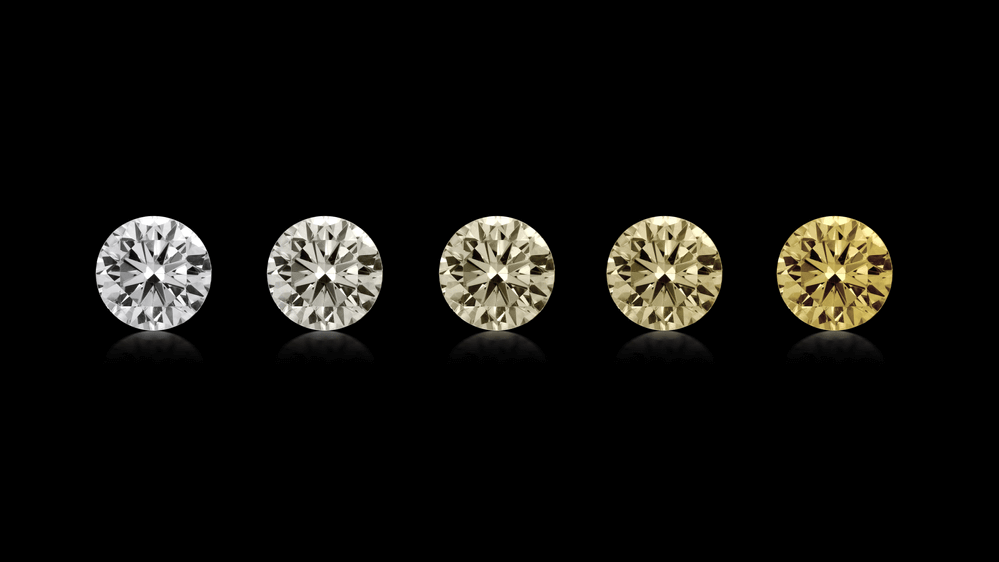Unlock the Secrets of Diamond Brilliance: Master the 4 C’s Today!

By Gary A.

Edited by Olivia H.
Published Sep 10, 2021
Edited on Dec 18, 2024
Choosing the perfect engagement ring starts with understanding the 4 Cs of diamonds, a guide that ensures you make an informed and confident decision for a stunning result.

- 7 Quick Tips for Evaluating the 4 C’s of Diamonds When Purchasing an Engagement Ring
- Introduction
- The Basics of the 4 C’s
- Diamond Cut
- Diamond Color
- Diamond Clarity
- Carat Weight
- The Importance of GIA Grading
- Our Expert Take
- 8 FAQs
Before we dive deeper into the specifics, here are some practical tips to help guide your decision-making process:
7 Quick Tips for Evaluating the 4 C’s of Diamonds When Purchasing an Engagement Ring
- Tip 1: Understand the Balance Between Cut and Carat Tip: Prioritize the cut over carat size. A well-cut diamond will exhibit superior brilliance and sparkle, even if it’s smaller in carat weight. A larger, poorly cut diamond can appear dull and lifeless.
- Tip 2: Optimize Color Within Your Budget Tip: Aim for the ‘Near Colorless’ range (G-J) to get the best value. Diamonds in this range appear colorless to the untrained eye but are significantly less expensive than the ‘Colorless’ grades (D-F)
- Tip 3: Clarity: Seek Eye-Clean Diamonds Tip: Look for diamonds graded VS1 or VS2 for the best combination of clarity and value. These grades often present as ‘eye-clean’, meaning inclusions are not visible to the naked eye, offering a beautiful appearance at a more reasonable price.
- Tip 4: Carat Weight: Consider Shape and Proportions Tip: Understand that different shapes can make the diamond appear larger or smaller than its actual carat weight. For example, elongated shapes like oval or marquise can appear larger than a round diamond of the same carat weight.
- Tip 5: Examine the Diamond Under Different Lighting Conditions Tip: View the diamond under various lighting sources (natural light, store lighting, etc.) to get a sense of its true color and brilliance. This can help you assess the diamond’s performance in everyday environments.
- Tip 6: Factor in Symmetry and Polish Tip: While often overlooked, symmetry and polish grades significantly affect a diamond’s appearance. Ensure these grades are at least ‘Good’ to ensure the diamond’s facets reflect light effectively.
- Tip 7: Be Cautious with Fluorescence Tip: Be aware of the diamond’s fluorescence. In some cases, strong fluorescence can make a diamond appear hazy or oily, especially in higher color grades. However, in lower color grades, slight fluorescence can actually enhance the appearance by making the diamond look whiter.
Now that you’ve got these practical tips, use Jeweler AI below to find the perfect engagement ring that suits your style and budget:
Introduction
If there’s one thing you learn faster than anything else during your search for the perfect engagement ring, it’s that every diamond is totally unique – and that you need to know the diamond 4 C’s back to front before you spend a single dollar.
Sure – from a distance, these stones have always seemed pretty similar to you. You know enough to know that, as far as investments go, diamonds aren’t exactly the cheapest – and that, when the time comes to propose, you’re gonna need one of your own.
From there, you can take one of two approaches: you either pick out the most expensive diamond you can afford, or you can learn about the Four Cs in order to make a much wiser investment into a diamond that will be just as (if not more) beautiful than the one with the higher ticket price.
The reality is that each diamond is distinctive, with its own ‘fingerprint’ and its own character, and the best way to understand it is to break it down into four categories. We’ll take you through our ultimate diamond 4C guide and explain each one, giving you the knowledge to choose the best diamond for you.
The Basics of the 4 C’s
Cut, color, clarity, and carat – the four features that have the greatest impact on the appearance of any diamond.
The system of evaluating diamonds on the strength of their Four Cs was developed by The Gemological Institute of America (more commonly referred to as the GIA, and considered to be the most reliable organization of its kind) back in the 1940s. It is now recognized around the world as the standard for grading and evaluating diamonds.
Before the GIA’s grading system came into being, the diamond industry was held back (to a certain extent) by a definitive lack of standards. The 4Cs united these standards and ensured a unified approach for every gemologist, jeweler, and shopper.
As a result, even newcomers to the diamond world can protect their best interests and make a very strong choice – one that not only fits their budget but also maximizes it – provided they know how to interpret and use the Four Cs to their advantage.
Here are the 4 Cs of diamonds in order of importance…
Diamond Cut
Diamonds come out of the earth looking pretty rough – pun intended. They come out in irregular shapes, without that characteristic symmetry or polish that make diamonds recognizable to us. Only when they are cut and polished do they look beautiful enough to wear in fine jewelry.
Aside from carat weight, a diamond’s cut is arguably its most noticeable trait – and a little simpler to get your head around than clarity and color. For that reason alone, it’s one of the most important factors for you to get right since any shortfalls will be obvious to everyone.

Evaluating the Cut: From Ideal to Poor
Ideal, Excellent, Very Good, Fair and Poor
Diamond cutting is a highly exacting art. Cutters need to examine the natural shape and dimensions of the rough diamond in order to determine how to create the highest quality diamond possible, without losing too much of the original weight of the stone.
A diamond’s cut is by far the most significant factor influencing its fire, brilliance, and scintillation – or, in other words, its ability to sparkle as much as possible. Diamonds with a poor cut – for instance, one that is too shallow or asymmetrical – will not sparkle as well as it otherwise could.
To find a diamond’s cut grade, a gemologist will assess seven key components: brightness, fire, and scintillation – which, as we mentioned above, all relate to its light performance – as well as the more technical aspects of weight-ratio, durability, polish, and symmetry.
Each of the seven components is graded individually, although there is no singular way of combining them together to create one cut grade. The final grade will, to a certain extent, depend on the overall appearance of the diamond, which is why two diamonds can look totally different and still feature the same grade.
It is a little complicated, but provided you stick to the higher grades and do your research on your chosen diamond, you can ensure a very high quality.
Diamond Color
Of all the GIA 4Cs, color is probably the first curveball you’ll come across. While there are naturally colored diamonds out there – known as ‘fancy colors’, and available in just about any hue imaginable – most of us want to stick to the colorless diamonds so characteristic of engagement rings.
Surely color doesn’t matter one iota when your sights are set on a clear diamond, right? Wrong – and a pretty risky conclusion to jump to.
What is the GIA Color Scale?
The GIA grades diamonds on a letter color scale from D – Z. The less color a diamond has the higher the value it has. A diamond graded with the letter D represents a colorless diamond and continues up the scale to a diamond with the letter Z representing a light yellow or brownish tint. Each diamond is color-graded by using controlled lighting and precise viewing conditions.
This particular color scale applies only to clear diamonds, with fancy color diamonds being graded against an entirely different scale.
In clear diamonds, it is very common for diamonds to be ‘polluted’ by other substances during their development underground. A high presence of nitrogen molecules can effectively pollute the diamond’s colorless appearance, and cause it to appear yellow or brown.
This may be a slight tint – not even distinct enough for the untrained, naked eye to discern – or it may be very, very obvious (or anywhere between).
A color grade is used to demonstrate how significant a diamond’s yellow cast is. There is very little distinction between one grade and the next (particularly at the higher end of the scale, where any yellow tint requires specialist knowledge, lighting, and tools to detect), so the scale is divided into the following categories:

Colorless diamonds (D-F) are, obviously, the most expensive. Near Colorless diamonds (G-J) are, however, still of a high enough quality to appear clear, particularly to the untrained eye. Below that, however, discoloration will be more obvious, and will impact the natural beauty of the stone.
Selecting the perfect shade
Any visible yellow tint to your diamond could have a major impact on an otherwise beautiful engagement ring. Still, you don’t need to shoot for a D Color to make the most of your investment.
Remember how we said that there was very little difference between each separate color grade? While that may sound a little confusing right now, you’ll be glad you worked that one out when the time comes to hand over your hard-earned cash, since even an F Color diamond comes with a significantly higher price tag.
Still, when it comes to diamond color vs clarity, it’s clarity that falls a little higher on our list of priorities…
Diamond Clarity
If you tend to think of gemologists as the guys with great big magnifying glasses, then you’re partly right. A big part of a diamond’s quality stems from the level of inclusions and blemishes it has and, to accurately measure those, diamond graders have to inspect every part of a diamond’s surface and internal structure under 10x magnification.
And, while it’s pretty unlikely that you’ll ever be looking at your diamond so closely, you still need to know exactly how the clarity grades impact the diamonds you are looking at.
The GIA Scale and Its Importance for Understanding the Four C’s of Diamonds
Flawless (FL), Internally Flawless (IF), Very Very Slight Inclusions (VVS1 and VVS2), Very Slight Inclusions (VS1 and VS2), Slight Inclusions (SI1 and SI2), Inclusions (I1, I2 and I3).
Inclusions are internal flaws, caused by natural forces and pollutants during the diamond’s long development underground. Most are far too small for the eye to see, although some can overwhelm a diamond and decrease its value by thousands of dollars. You can check out our guide to what diamond inclusions really are in order to get a better idea about what it is you’re looking to avoid.
Blemishes are external flaws. Some are natural, but many are caused during the diamond’s journey from the earth’s surface to while the diamond is being handled or worn. Again, these are usually too small to be seen by the naked eye.
When these inclusions and blemishes are small enough to go unnoticed without a microscope, a diamond is referred to as being eye clean.
Eye clean diamonds will, by definition, appear to be as flawless as FL and IF diamonds – and they can be found in grades as low as VS and, at times, SI.
The GIA clarity grading system takes into consideration the size, nature, position, color, relief, and quantity of clarity characteristics visible under this high level of magnification.
These imperfections are then documented on a diamond ‘plot’, which, as you can see from the image below, offers a map to a diamond’s inclusions. This plot is included in every single GIA Diamond Report and represents a unique ‘fingerprint’ for the diamond.
Only Flawless Diamonds will have no inclusions marked on their diamond plot. Although it is inevitable that they will still have inclusions, they may not even be visible under 60 or 100x magnification.
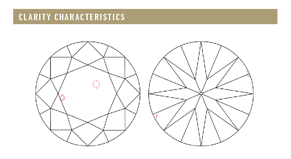
Eye-Clean Diamonds: A Smart Choice
As with color, there is only a minor difference between one grade and the next – particularly in the case of degrees, such as VVS1 and VVS2. Here is a brief explainer on the separate grades:
- Flawless (FL) – No inclusions or blemishes are visible to a skilled grader using 10× magnification
- Internally Flawless (IF) – No inclusions and only blemishes are visible to a skilled grader using 10× magnification
- Very, Very Slightly Included (VVS1 and VVS2) – Inclusions are difficult for a skilled grader to see under 10× magnification
- Very Slightly Included (VS1 and VS2) – Inclusions are minor and range from difficult to somewhat easy for a skilled grader to see under 10x magnification
- Slightly Included (SI1 and SI2) – Inclusions are noticeable to a skilled grader under 10x magnification
- Included (I1, I2, and I3) – Inclusions are obvious under 10× magnification and may affect transparency and brilliance.
This means that, a lot of the time, a diamond of SI2 quality will look (to the naked, untrained eye) like a diamond of IF clarity. So, why pay for high clarity when a low clarity diamond looks just as beautiful, but costs a fraction of the price?
Eye clean diamonds are the ideal choice for anyone. There are plenty out there, and they don’t cost the earth.
Carat Weight
Remember how we said that cut is the most noticeable part of the diamond 4 Cs, second only to carat weight? This is because carat weight refers to the diamond’s size – although, obviously, two diamonds of the same carat weight can look significantly different in size if they are cut differently.
For instance, this 0.7 Carat Round Diamond can appear a little smaller than this 0.7 Carat Pear Diamond, since the latter boasts an elongated shape.
How is Diamond Carat Measured?
1 carat is equal to 0.2 grams, or 200 milligrams. GIA gemologists use an electronic micro-balance to weigh each diamond to gather the carat weight.
1 carat is approximately the weight of a paperclip – or, perhaps more poetically, a raindrop. A carat is divided into 100 points. So, a 50-point diamond weighs .50 carats.
The first step in the GIA certification process is weighing and measuring the diamond. GIA gemologists use an electronic micro-balance to weigh each diamond to gather the carat weight. They also use an optical scanning device to determine the exact measurement and proportion of the diamond. These devices provide the most accurate measurements of a diamond. It’s very important that a diamond’s carat is recorded precisely by the grader since even the most minor discrepancy in weight between two otherwise identical diamonds can cause the price to change drastically.
Balancing Carat with the Other Diamond 4 Cs
Of all the Four Cs, carat is unique in the fact that there is no ‘optimal grade’. The average engagement ring diamond sits at around 1 carat, although recent years have seen many shoppers preferring larger diamonds around the 2 and 3 carat ranges. The largest cut diamond in existence is 530.4 carats (the Cullinan 1), and far too large to be worn on the finger – not to mention it belongs to the British Royal Family.
What we’re trying to say is this: there is no ‘right’ carat weight, although we would tend to advise shoppers to stay above the 1 carat range to ensure a beautiful, eye-capturing ring.
1 Carat Diamond Prices
Anywhere from $2,000 to $12,000 – or, in some rare cases, even more.
While it would be simpler, it would be impossible for any diamond’s value to be determined by carat weight alone. Each of the Four Cs influences that final market value, which means that a one carat diamond (or, for that matter, a two, three or ten carat diamond) has a very broad potential price range.
When it comes to good quality diamonds, price tends to increase exponentially with carat weight. In other words, this 2 Carat H-SI2 Round Diamond won’t simply cost double the price of this 1 Carat H-SI2 Round Diamond. This can represent something of a sticking point for some shoppers, and it can make it slightly harder to get your head around the types of diamonds available in your price range, but it’s an important factor to keep in mind at all times.
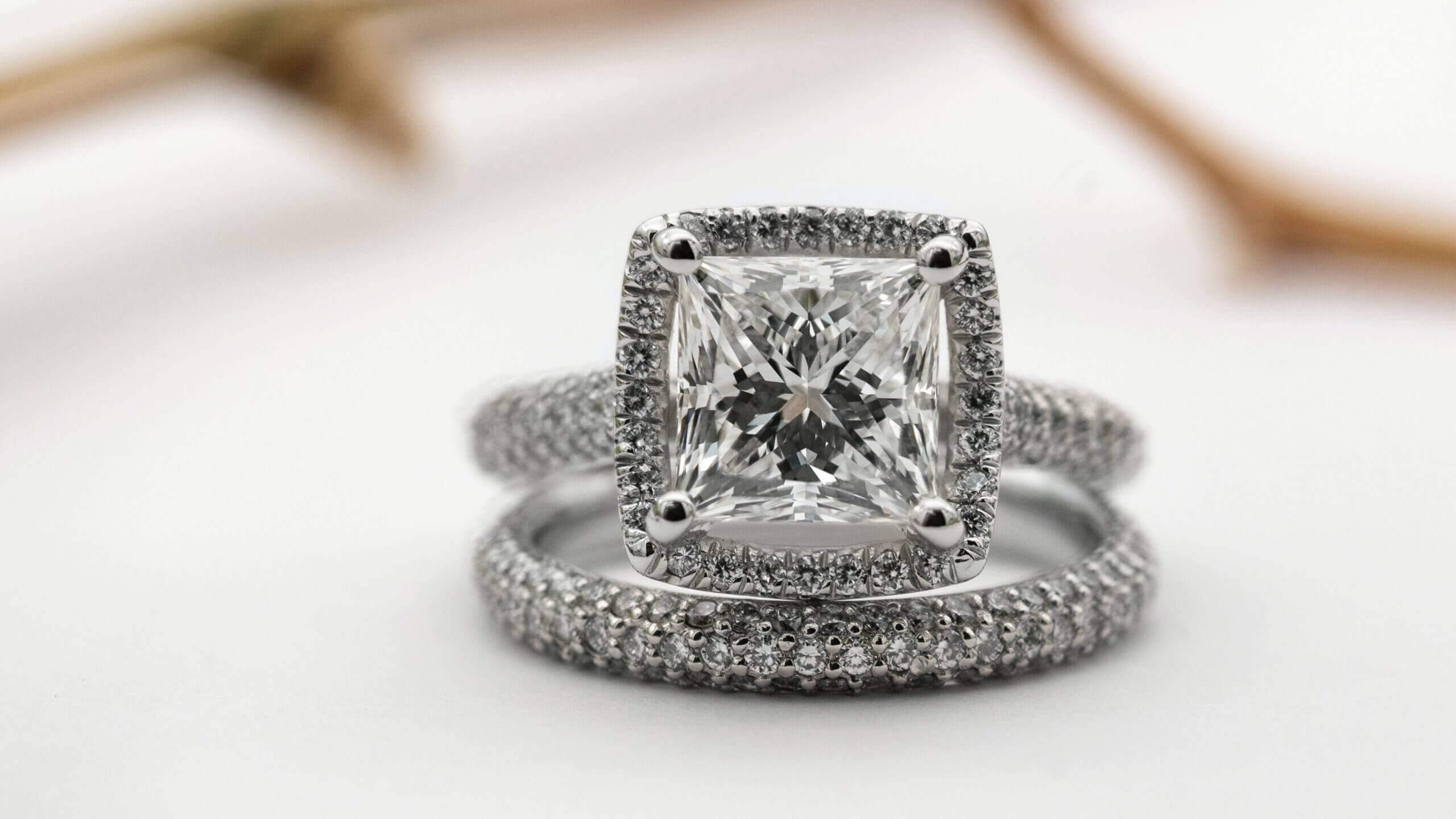
The Importance of GIA Grading
First off, what is a GIA Grading Report? Put simply, it confirms that the diamond has undergone stringent checks, according to the scales for cut, color, clarity and carat weight listed above, conducted by experts.
Each diamond is analyzed and graded by at least two gemologists, based on these four qualities. Every diamond that completes the GIA grading system and receives a complete assessment of the stone’s 4 C’s receives a GIA certification grading report, with a unique GIA Report Number.
You should never invest in any diamond that does not come with an authentic GIA Report. Unfortunately, some people do attempt to forge these reports and pass off a low quality diamond as one that is much more valuable – or a fake diamond as a real diamond.
For peace of mind, you can verify the authenticity of any report via our GIA Diamonds Grade & Score Check using the unique Report Number.
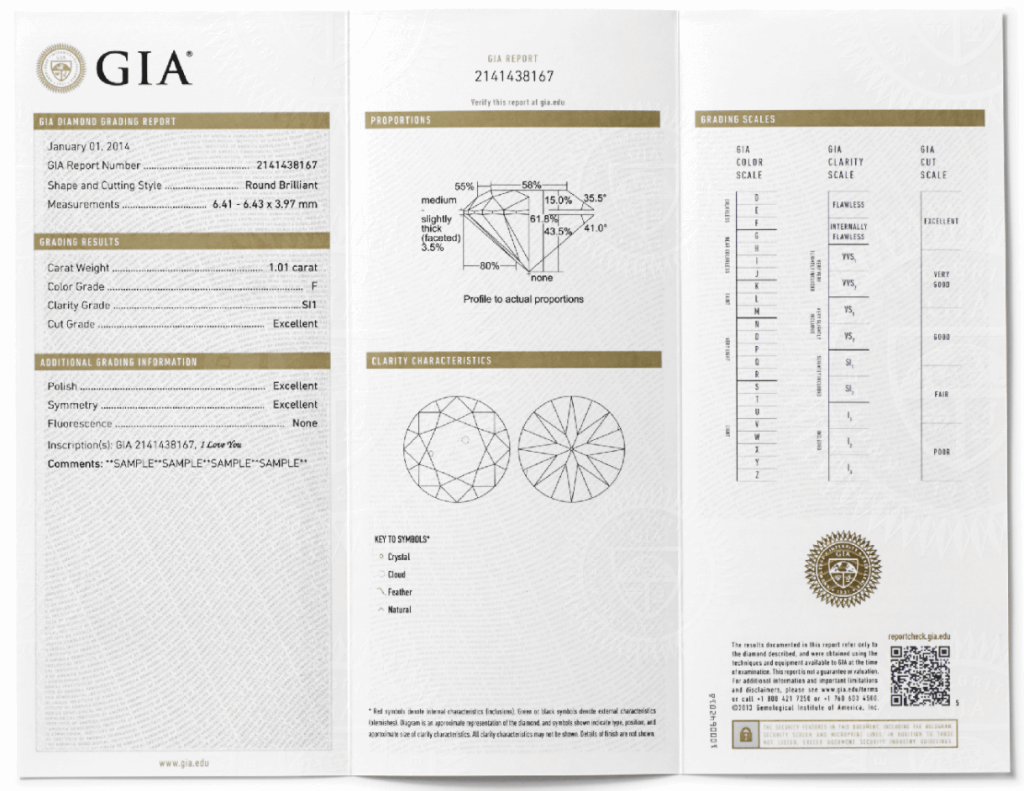
Is it Worth Buying a GIA Certified Diamond?
Absolutely. We would strongly urge any of our readers to invest only into diamonds with a valid GIA Report.
We’ve said it before, and we’ll say it again: the best level of reassurance you can take from your diamond is its GIA Report.
Reputable jewelers will never try to sell you a diamond without this vital document, so don’t hesitate to walk away from anyone trying to sell you a diamond that has not been graded and certified by experts.
When evaluating diamonds, it’s crucial to delve into the details of the 4 Cs to make an informed decision about your purchase.
Our Expert Take
So, which is the most important of the diamond four Cs? Most professionals in the diamond industry consider the cut of a diamond to be the most important of the C’s of diamonds. The cut of the diamond has the greatest influence on a diamond’s sparkle. And, while it’s true that all 4 Cs are important in collaboration, the cut is definitely a major player.
And what’s the least important C? Well, while none of these features can be overlooked, clarity is the least restrictive of the four categories. Yes, eye cleanliness remains key – this isn’t your sign to loosen the reins and invest thousands of dollars into a diamond with visible inclusions. Instead, we’re saying that, since it is entirely possible to find a diamond with a clarity grade as low as SI1 (or, in the cases of smaller diamonds, SI2), you’ve got plenty of ‘breathing space’ when it comes to budgeting for an eye clean diamond.
Whatever you consider important, the best thing you can do is go into the process with your eyes open, aware of the importance each of the 4Cs holds for a diamond’s visual quality and financial value.
8 FAQs
- Q1. What does each ‘C’ in the 4 C’s of Diamonds stand for?
- Answer: The 4 C’s represent Cut, Color, Clarity, and Carat. Each of these factors plays a crucial role in determining a diamond’s quality and value.
- Q2. How does the cut affect a diamond’s appearance?
- Answer: The cut of a diamond greatly influences its brilliance and sparkle. A well-cut diamond reflects light beautifully, making it appear more luminous and sparkling.
- Q3. Is colorlessness the most desirable feature in a diamond?
- Answer: Yes, in white diamonds, colorlessness is highly prized. The less color a diamond has – graded from D (colorless) to Z (light yellow) – the more valuable it is.
- Q4. What does clarity mean in terms of diamond quality?
- Answer: Clarity refers to the absence of inclusions (internal flaws) and blemishes (external imperfections). Higher clarity means fewer visible flaws, enhancing the diamond’s purity and sparkle.
- Q5. Does a higher carat weight always mean a better diamond?
- Answer: Not necessarily. While carat weight indicates the size of the diamond, it should be balanced with the other C’s for overall quality. Sometimes, a smaller, well-cut diamond can be more valuable than a larger one with poor clarity or color.
- Q6. What is the significance of a GIA certification for diamonds?
- Answer: GIA (Gemological Institute of America) certification ensures that a diamond has been independently assessed for its quality based on the 4 C’s. It provides a trustworthy and standardized evaluation of the diamond.
- Q7. Can the human eye detect differences in diamond clarity grades?
- Answer: It depends on the grade. While high clarity grades like Flawless or Internally Flawless are difficult to discern without magnification, lower grades (like SI or I) might have visible inclusions to the naked eye.
- Q8. How important is symmetry in a diamond’s cut?
- Answer: Symmetry plays a significant role in a diamond’s appearance. It ensures that the facets are proportionately aligned for optimal light reflection, contributing to the diamond’s overall brilliance.
Explore the brilliance with Jeweler AI – dive into the world of diamonds and find your perfect match with the 4 C’s of Diamonds.
FOLLOW-UP GUIDE SERIES

